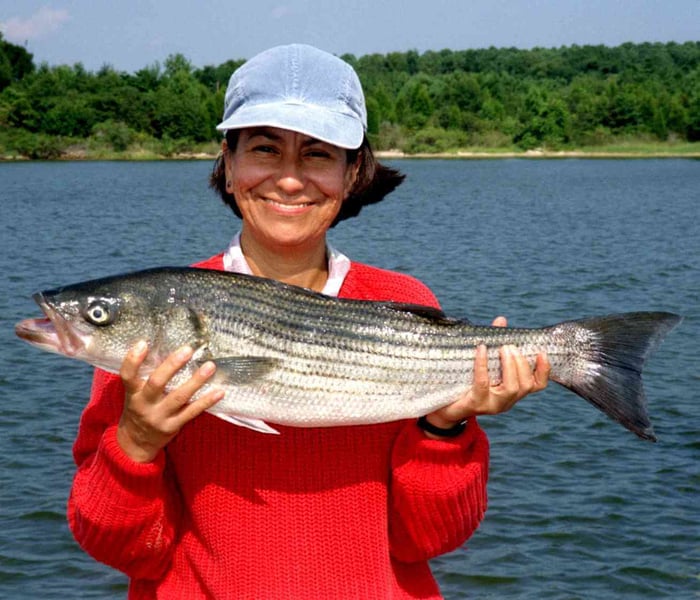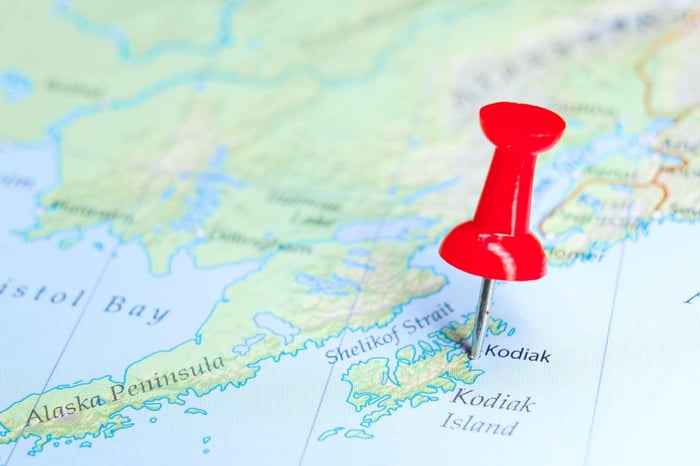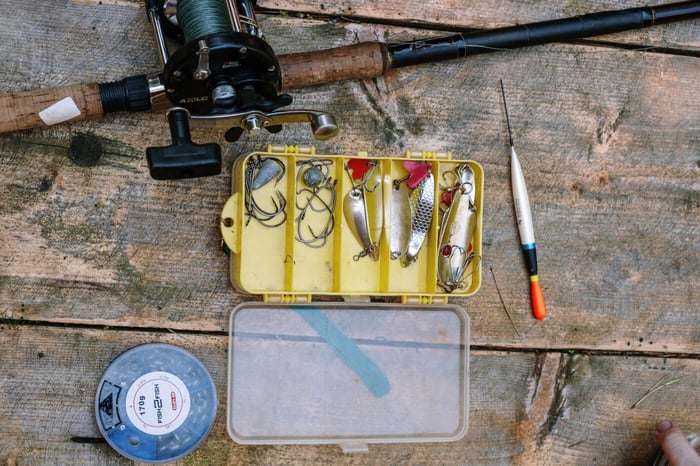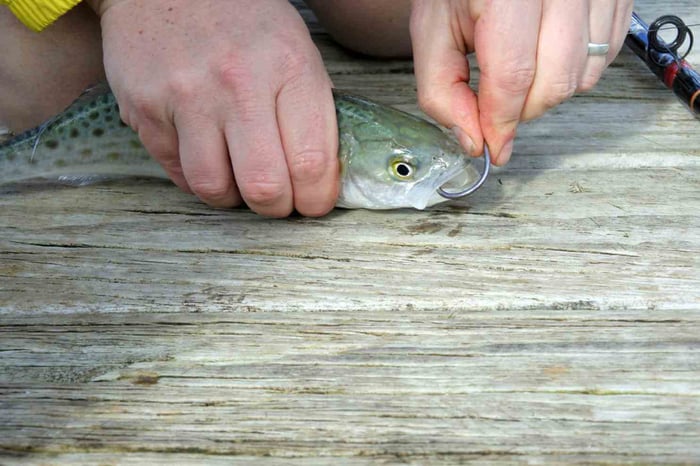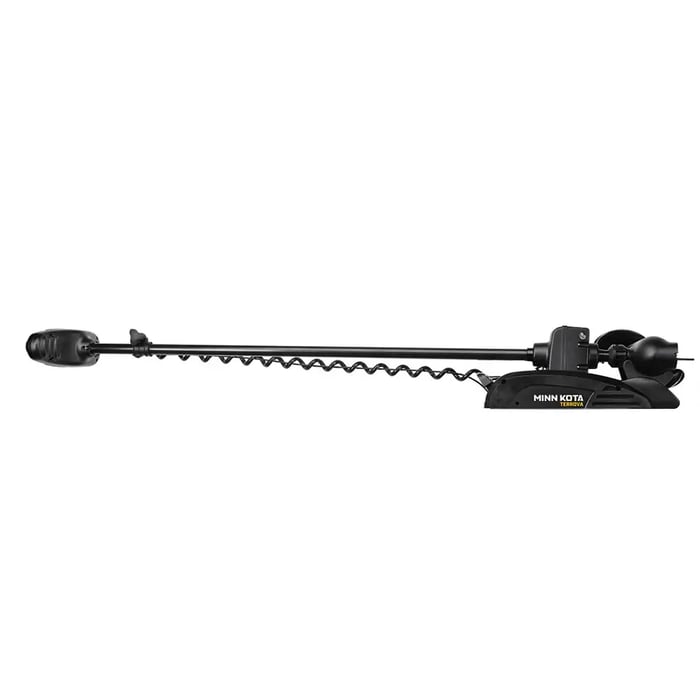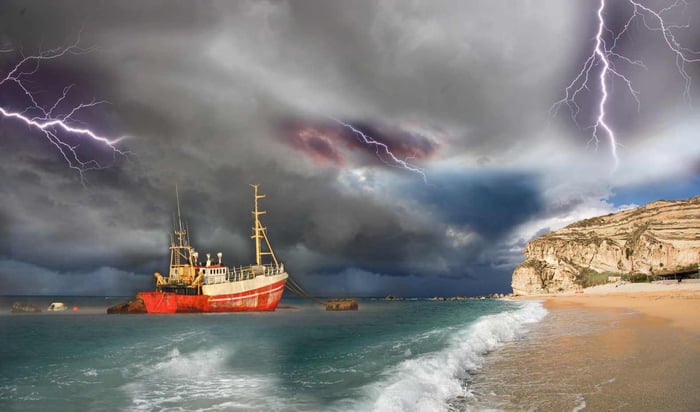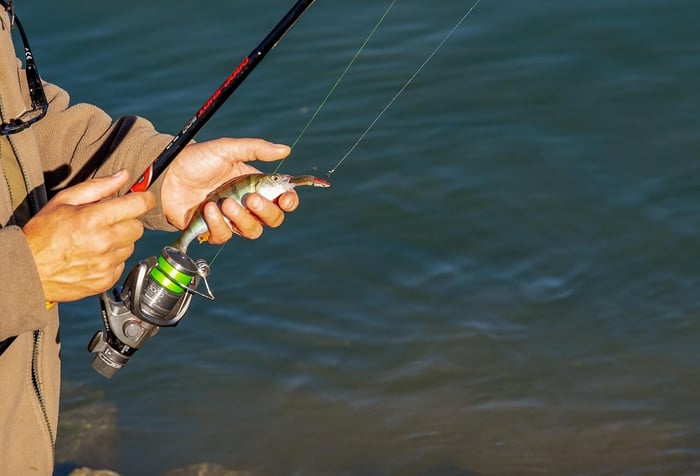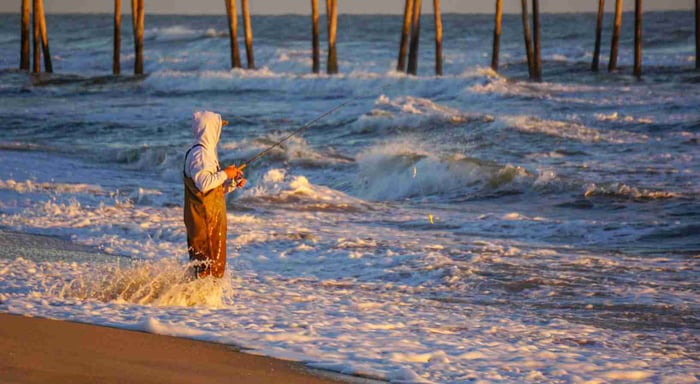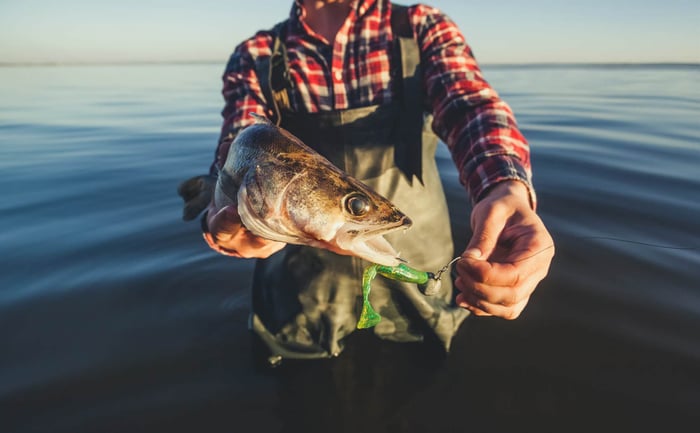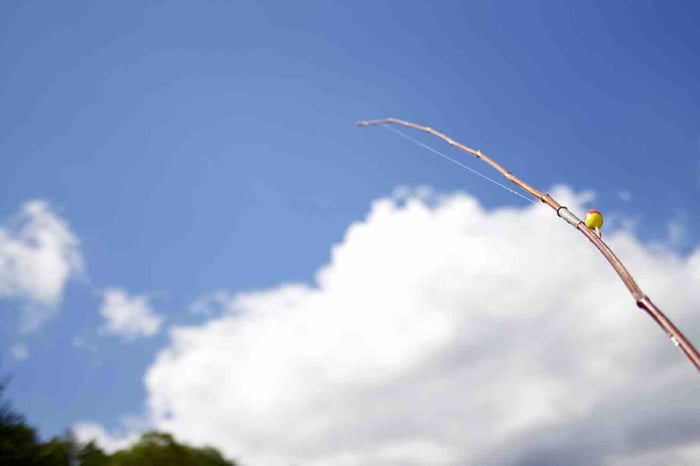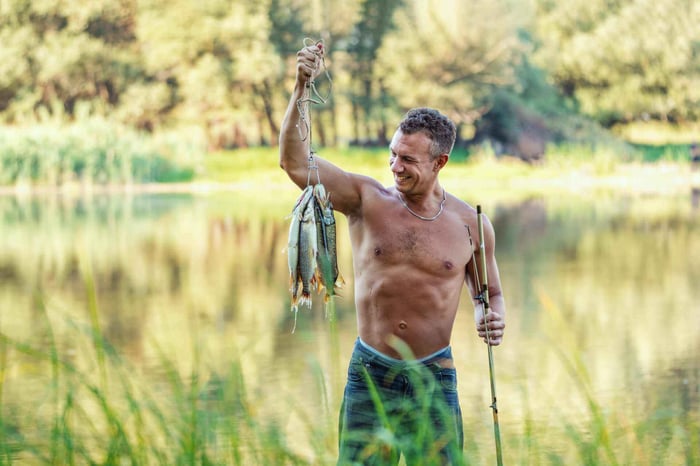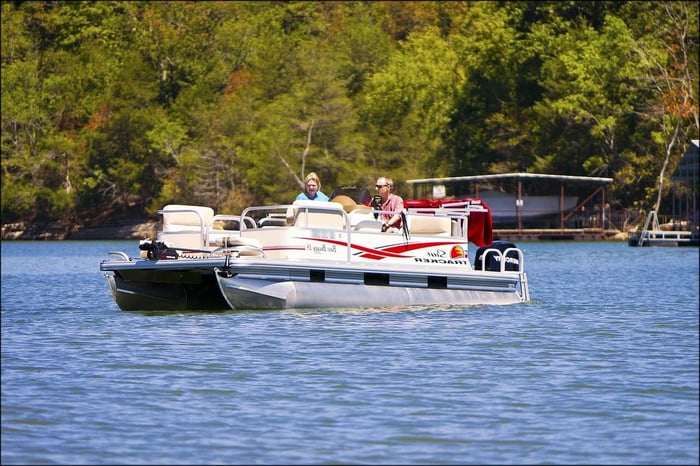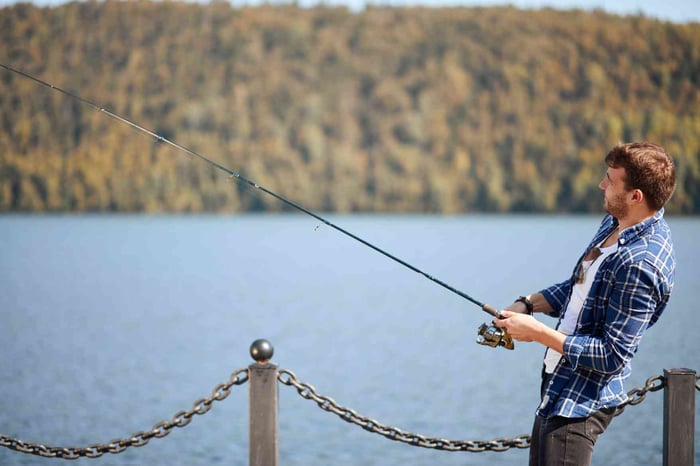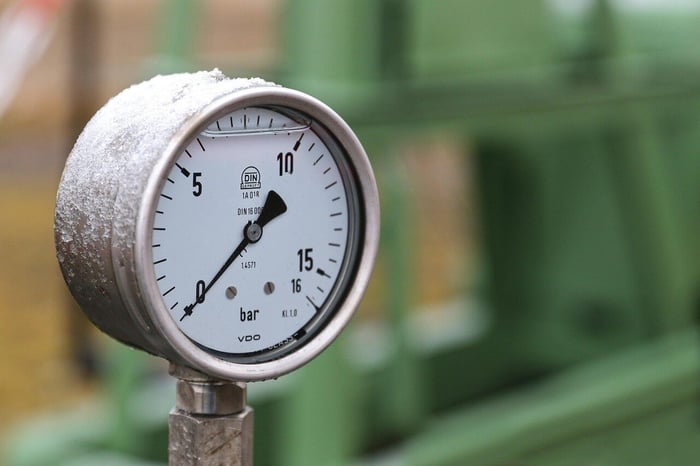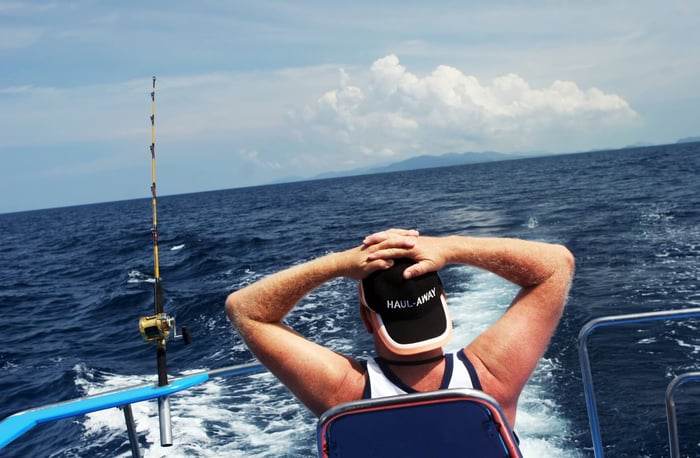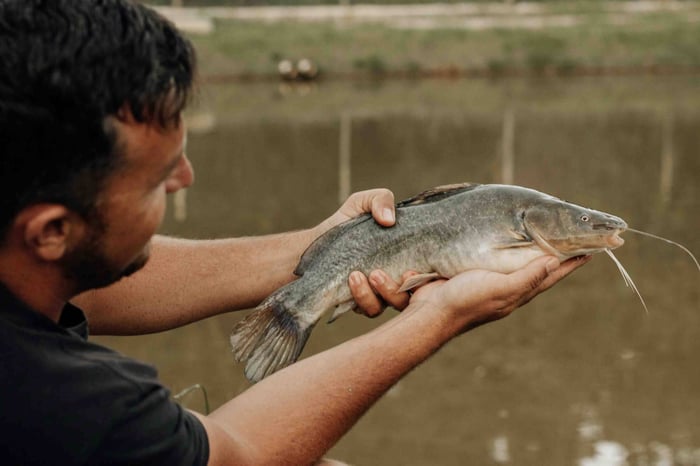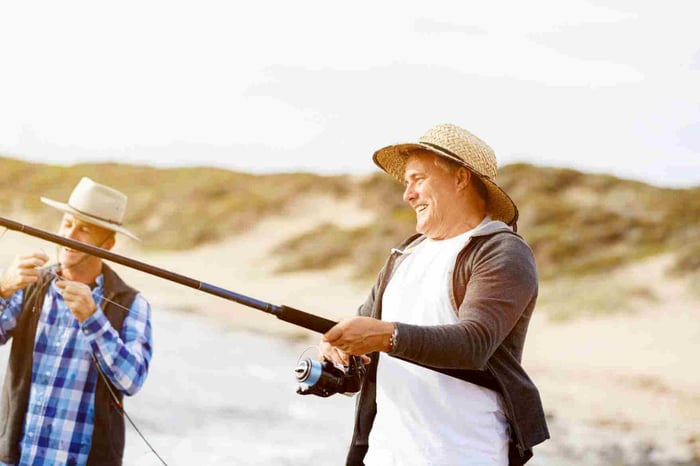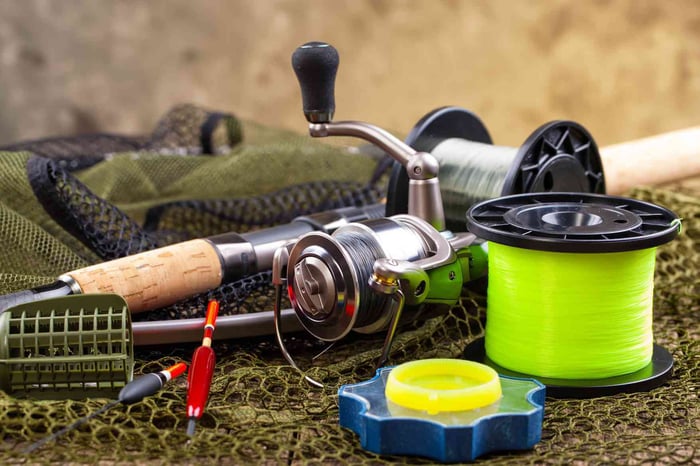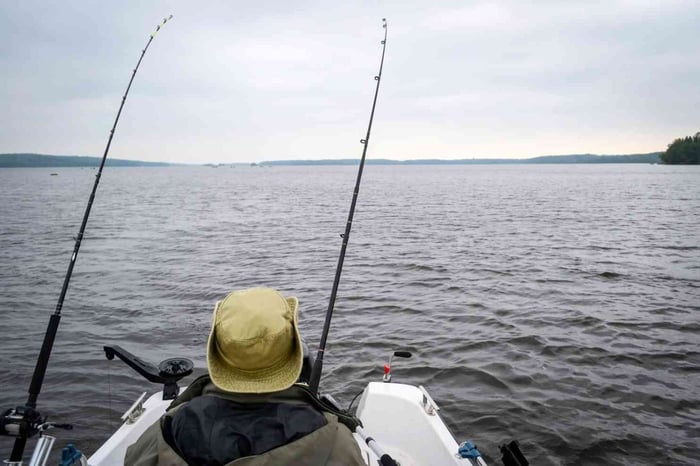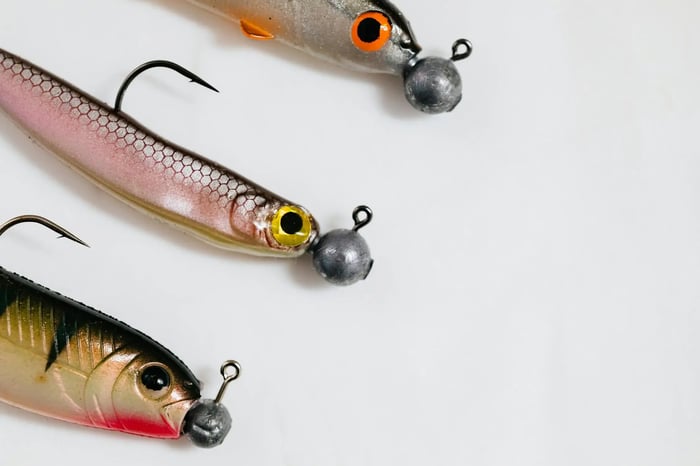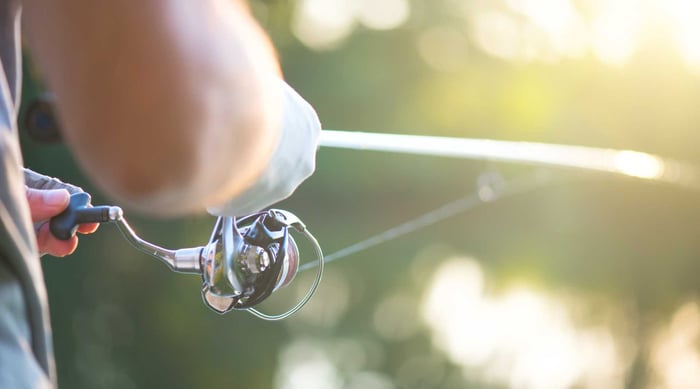Table of Contents
Striped Bass Fishing: An Overview
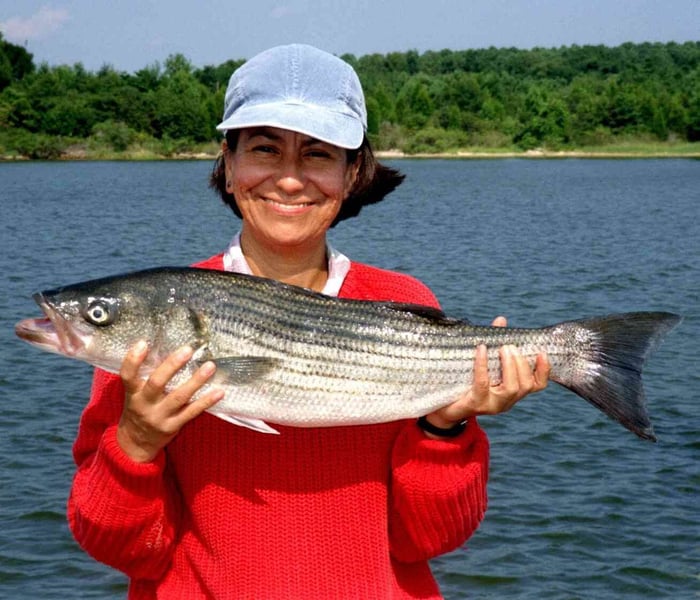
If there is one fish that gets anglers excited, it's the striped bass—or, as many call it, the striper.
While found in freshwater and saltwater, stripers are one of North America's most exciting game fish: they grow large, fight very hard, and can be taken in rivers, lakes, estuaries, and open oceans.
Whether from land, a boat, or even a kayak, these fish continue to challenge you, your skills, and your patience, making every success feel like a victory.
Striper fishing is nothing if I'm not hoping to catch one. So, to succeed, you must know their behavior—where they will go and how they feed.
Stripers are always hungry, but they make a good excuse by making life miserable for anglers.
They spend most of their time chasing baitfish, reacting to the tides and currents, and relying on seasonal conditions.
Knowing when and where to fish and how to apply the correct techniques makes all the difference between returning home without a catch and reeling in a trophy striper.
In this part, we will be dissecting everything about striped bass fishing.
This would include feeding habits, best bait and lures, tackle, locations, and most effective shore and boat fishing techniques.
This guide promises to empower you with the correct information and confidence to fish successfully. So, let's get to it and prepare for some serious striped bass action!
Understanding Striped Bass Behavior
Striped bass are such peculiar kinds of fish. They have their little habits that either turn fishing for them into a problem or a thrill.
Their behavior and habits ultimately dictate the outcome of any place you find striped bass, fishing in fresh lakes or on the coast.
While they will spend part of the year in saltwater and then migrate into freshwater according to warm-water or cold-water conditions, what is most important is their movement to feed.
Where Striped Bass Live
Striped bass are anadromous, migrating from salt water to freshwater flow and vice versa.
Most Atlantic striped bass distribution occurs along the East Coast, ranging from Nova Scotia to northern Florida.
They have also been introduced on the Pacific coast, so populations exist there. Some of the striped bass stays land-locked in lakes and rivers of inland states like South Carolina and North Carolina, and these populations develop into self-sustaining populations.
Large population groups of striped bass are also found in substantial water bodies such as the Hudson River, Chesapeake Bay, Delaware River, and the St. Lawrence River.
This can be called the sunshine bass, a product of cross-breeding white and striped bass. It has been stocked in many freshwater fisheries and is intended to improve recreational fishing.
Seasonal Movements & Spawning
Striped bass are strong migrators and can swim in big schools on the Atlantic Coast, even as far up into rivers as their spawning occurs.
It generally occurs during the early days of April, usually at ideal ranges found in rivers with fresh water like the Hudson River, Delaware River, and Chesapeake Bay.
The female striped bass lays millions of larval fish, which drift with the current until large enough to fend for themselves.
Small striped bass remain in rivers and estuaries before joining the large schools that wander the coast.
During the summer, significant striped bass move to deeper waters, whereas some populations of landlocked stay in freshwater lakes and inland lakes all year.
In the fall, striped bass return to warmer waters, sometimes coming up from the Atlantic Ocean into federal waters near the Gulf of Mexico or southern coastal areas.
What Do Striped Bass Eat?
Striped bass feed opportunistically, and their diet consists of various prey types that include:
Baitfish such as menhaden, herring, and rainbow trout.
Live eels are one of the most favorite baits according to many anglers.
Crustaceans- crabs and shrimp.
Sea worms, which are pretty effective in colder waters
Small fish consisting of their offspring at times.
Because striped bass are aggressive hunters, many fishermen prefer to imitate their natural prey by using live bait or artificial lures such as bucktail jigs and umbrella rigs.
Best Times to Catch Striped Bass
Timing is everything for successful striped bass fishing. Recreational anglers have the best luck during:
Dawn and dusk, when stripers are most active.
Tidal changes, especially incoming and outgoing tides.
Moon phases, with new and full moons, often trigger more feeding.
The coastal areas-most notably around river mouths, sandy beaches, and rocky shorelines-where stripers forage for food-are prime waters for striped bass fishing.
Minimum size limits in federal waters protect striped bass populations from commercial harvest while ensuring a potential healthy recreational fishery for generations.
Understanding striped bass biology, migration, and feeding will give you a better angle when hunting for a trophy fish.
When it comes to catching freshwater striped bass in freshwater rivers or going after big stripers in saltwater locales, it revolves around knowing when and where the fish are biting.
Essential Gear for Striped Bass Fishing
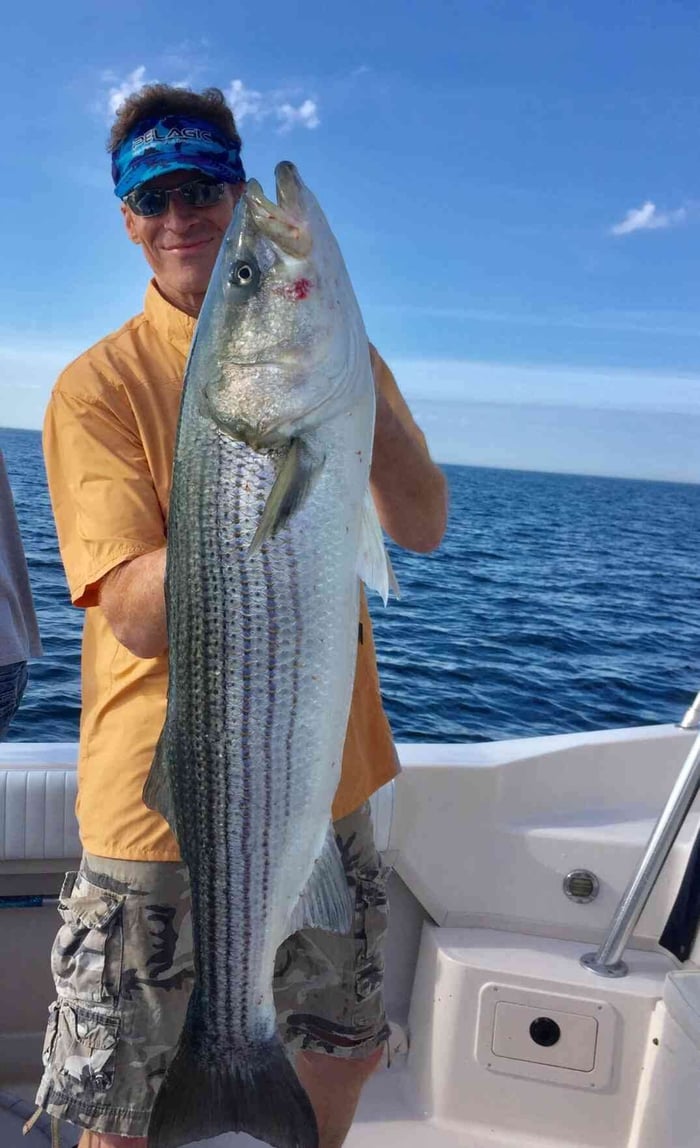
It's just as much about gear as it is about knowing where and when to fish for striped bass. Big game fish fight hard, so you need proper gear.
Whether it is the Atlantic Coast, some freshwater lakes, or right up against the mouths of rivers, choosing the right rod, reel, line, and tackle makes a big difference in how many of these striped bass you get in your net.
Rods & Reels: The Essentials of Striper Fishing
A medium-heavy spinning or baitcasting rod will handle striped bass best.
While those hunting smaller-size striped bass can get away with a lighter rod, large stripers should require at least a 7-9 foot rod with a good back.
When taking the bait, an Atlantic striped bass fishing rod should throw heavy lures and withstand sudden pulls from the fish.
Spinning reels are great for beginners and many fishermen who prefer live bait or lighter lures.
Baitcasting reels offer more control and power, making them a good choice for umbrella rigs and bucktail jigs.
Fishing Line: Strength Matters
Choosing the right fishing line depends on where and how you fish for striped bass.
The braided line is popular because it is strong and sensitive, allowing you to feel every bite. It's excellent for striped bass fishing in heavy cover or deep waters.
Monofilament line is more forgiving and works well for hybrid striped bass in freshwater fisheries.
Fluorocarbon leaders help prevent break-offs, especially when targeting big stripers in rocky coastal areas.
Hooks & Rigs: What Works Best?
Since striped bass feed on numerous types of prey, you would require the proper hooks and rigs to complement these feeding behaviors.
In some areas, circle hooks are mandatory when fishing live eels or other popular baits. These hooks reduce injury upon release, and knotless nets may improve wildlife conservation.
J-hooks work very well but often gut-hook the fish. These hooks are best used when you intend to eat the fish.
Live bait rigs work well in freshwater rivers and coastal areas, especially when fishing with rainbow trout or herring.
Tackle Box Essentials: Don't Leave Home Without These
A well-stocked tackle box is crucial for recreational fishing. Here are some must-haves:
Swivels to prevent line twists.
Weights to keep bait at the correct depth, especially when fishing near sandy beaches or freshwater lakes.
Leader material to manage the sharp gill plates of large schools of stripers.
Pliers are used to remove hooks without injuring an angler.
Fish grippers that will hold an erected fish snugly.
The right gear will prepare you for striped bass fishing in any environment, whether on the Hudson River, Delaware River or off the Pacific Coast.
Best Baits and Lures for Striped Bass
In striped bass fishing, the first and most important knowledge that one needs to acquire is which bait or lure to use.
Striped bass are typically opportunistic, meaning they eat almost everything if available; hence, they can absorb live bait or an artificial lure replicating their natural food.
From Atlantic Coast streams to freshwater rivers to salt rivers, the right bait will make all the difference between many fish and hardly any fish.
Live Baits: Natural and Effective
Live bait is the most reliable means of catching large stripers, especially when fishing for female striped bass during their spawning migrations.
Some of the best live baits include bunker (menhaden), live eels, herring, and mackerel.
Rainbow trout are also effective for inland lakes. Keep your bait fresh and active by using an aerated bait tank and avoiding overcrowding.
Artificial Lures: Mimicking the Real Thing
Artificial lures can also be used when live bait is not an option.
Topwater Lures: Poppers and walk-the-dog-style lures are very effective for early morning and evening striper fishing when bass hunt on the surface.
Swimbaits & Soft Plastics: They resemble small, young striped bass and other fish, so they are an excellent option for the weekend angler who fishes fresh and saltwater.
Jigs and bucktails are essential for working at different levels, especially on live eels or soft plastic trailers.
Crankbaits and spoons are very effective for deep-feeding striped bass, especially in rivers like the Hudson and Delaware.
Catch a big striped bass by matching the bait to what striped bass eat in a given area. There is nothing more exciting than landing a striped bass from a sandy beach, a near-river mouth, or even from a lake freshwater location.
Proven Techniques for Catching Striped Bass
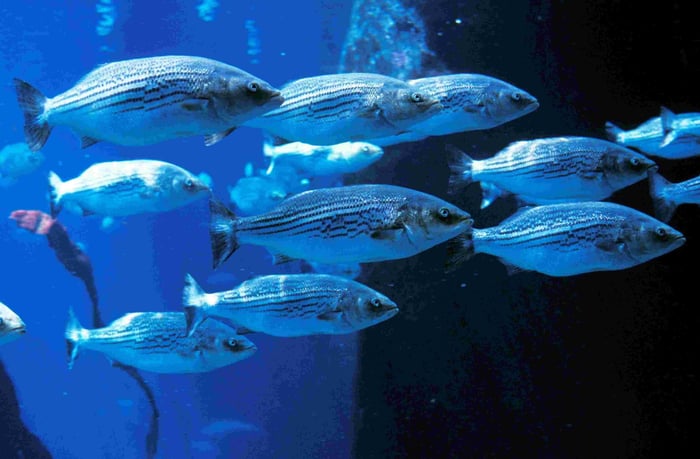
Catching striped bass requires the proper technique at the right time.
Aggressive-hard-fighting fis and stripped bass often move between fresh rivers and an environment of salt water or even inland lakes; this makes catching them an exciting and challenging proposition.
Shore, boaters, and nightlife anglers should consider how striped bass live, feed, and react to changes in conditions for an increased chance of hooking fish.
1. Shore Fishing for Striped Bass
Fishing from shore is a great way to catch striped bass without a boat. Many anglers find success along sandy beaches, jetties, piers, and bridges, especially near river mouths where baitfish gather.
In places like the Hudson River and Chesapeake Bay, stripers move close to shore, particularly during spawning migrations.
Effective is casting into deeper waters with bucktail jigs, live eels, or swimbaits but slowly and steadily retrieved to imitate natural prey.
More time is also a significant factor in active striped bass feeding in the early morning, dusk, and tidal changes.
2. Boat Fishing Techniques
Fishing from a boat opens up more avenues for finding sizeable striped bass, with most of the bigger fish found in deeper waters where larger schools congregate.
Trolling is probably the most reliable technique: it's usually an umbrella rig, deep-diving plugs, or live bait dragged slowly astern.
The latter is ideal in areas such as the Delaware River and Nova Scotia, where stripers ride up and down deep channels.
Drifting and chunking also work well: drifting with live eels or bunker lets the bait move along naturally with the current, so it's irresistible to the big stripers.
Chunking cuts up baitfish like herring or mackerel and then tosses the pieces into the water to attract feeding fish.
3. Fly Fishing for Striped Bass
For those enjoying a challenge, fly fishing with striped bass provides incredible fulfillment. Striped bass readily slams large streamer flies that pattern baitfish very well, namely Clouser Minnows and Deceivers.
Fishing near shore within shallow waters near sandbars and rocky coastlines during dawn or dusk can be excellent.
A slow to moderate retrieve and short pause periods typically trigger strikes with small-size striped bass and trophy-class fish.
4. Night Fishing Tactics
Stripers are active at night, so nighttime fishing is a great tactic. Attracting baitfish with underwater lights can lure in schools of feeding stripers.
Many fishermen have great success with live eels, soft plastics, and topwater lures because they are easy for stripers to find in low light.
The Atlantic Coast and Gulf of Mexico have pilings from bridges, docks, and shadow lines, which increases the chances of finding actively feeding fish.
Mastering these techniques will increase the chances of catching striped bass for anglers of all skill levels, whether fishing in freshwater lakes, coastal areas, or deep waters along the Pacific Coast.
Final Thoughts: Elements for Striped Bass Fishing Success
While fishing for striped bass, it is necessary to consider where and what to cast, but the key is to understand the natural forces that affect their behavior.
Tides, weather conditions, and moon phases are vital in determining when the fish are as lively and active as possible and ready to bite.
Tides and currents feed time keys around river mouths, estuaries, and coastal areas as baitfish are swept along in moving water.
Fishing the two hours around tidal shifts can make a difference between a slow day and a banner catch. Weather conditions matter too—a steady wind drives baitfish to key areas, while changes in barometric pressure usually signal frenzies or slowdowns.
And then there's the moon—many recreational anglers have learned that full moon and new moon phases bring stronger tides and better fishing conditions, especially at night when stripers move closer to shore.
By paying close attention to these factors, anglers can improve their odds of landing small striped bass and big stripers that roam deeper waters.
Whether you are casting from a Chesapeake Bay pier, trolling off the Atlantic Coast, or fishing freshwater lakes for hybrid striped bass, in every case, timing everything will always work to your advantage.
These people who understand the elements and know how to work with them instead of against them find that striped bass fishing becomes more productive and rewarding.
